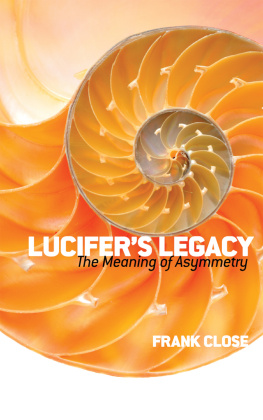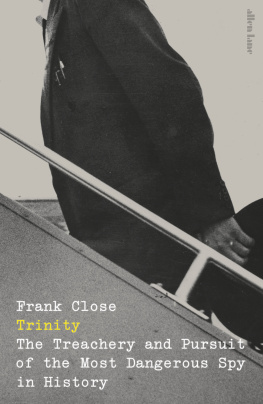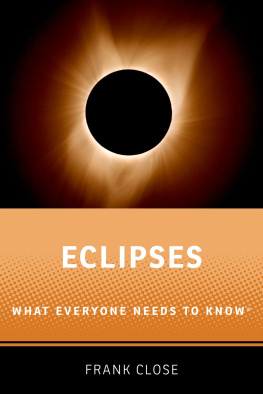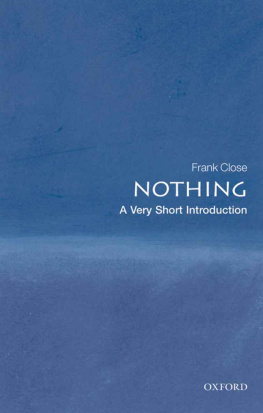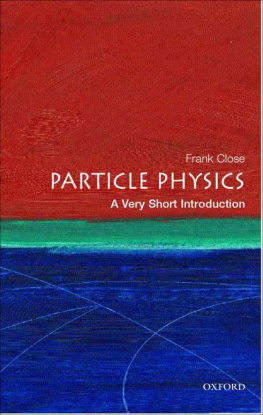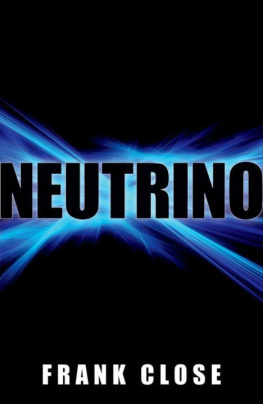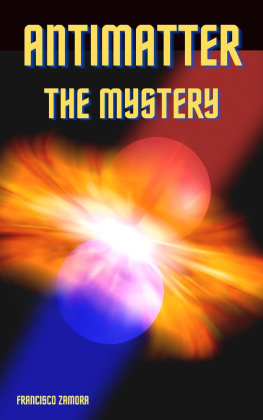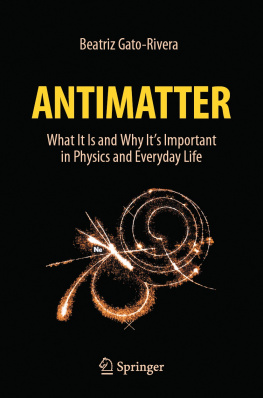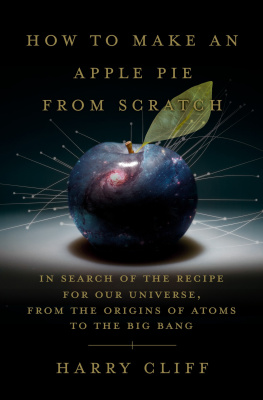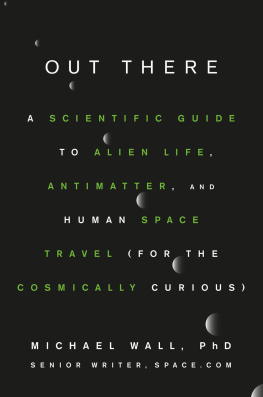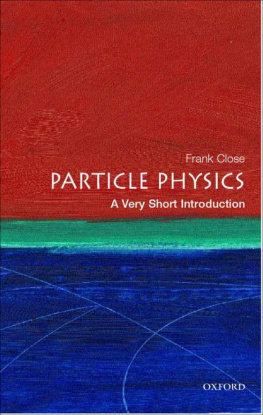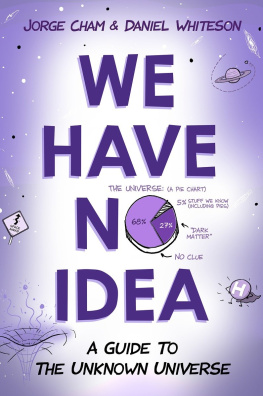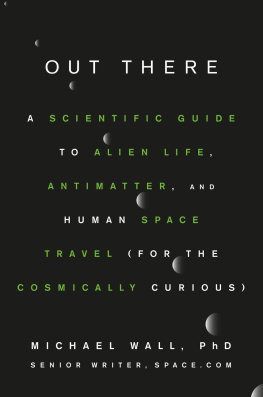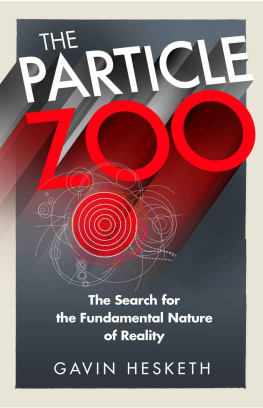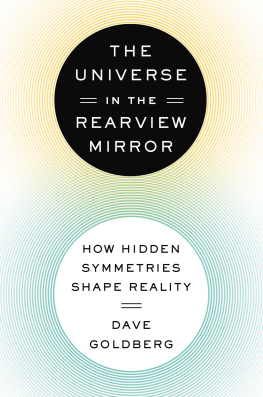Antimatter
Antimatter
FRANK CLOSE


Great Clarendon Street, Oxford OX2 6DP
Oxford University Press is a department of the University of Oxford. It furthers the Universitys objective of excellence in research, scholarship, and education by publishing worldwide in
Oxford New York
Auckland Cape Town Dar es Salaam Hong Kong Karachi Kuala Lumpur Madrid Melbourne Mexico City Nairobi New Delhi Shanghai Taipei Toronto
With offices in
Argentina Austria Brazil Chile Czech Republic France Greece Guatemala Hungary Italy Japan Poland Portugal Singapore South Korea Switzerland Thailand Turkey Ukraine Vietnam
Oxford is a registered trademark of Oxford University Press in the UK and in certain other countries
Published in the United States
by Oxford University Press Inc., New York
Frank Close 2009
The moral rights of the author have been asserted
Database right Oxford University Press (maker)
First published 2009
All rights reserved. No part of this publication may be reproduced, stored in a retrieval system, or transmitted, in any form or by any means, without the prior permission in writing of Oxford University Press, or as expressly permitted by law, or under terms agreed with the appropriate reprographics rights organization. Enquiries concerning reproduction outside the scope of the above should be sent to the Rights Department, Oxford University Press, at the address above
You must not circulate this book in any other binding or cover and you must impose the same condition on any acquirer
British Library Cataloguing in Publication Data
Data available
Library of Congress Cataloging in Publication Data
Typeset by SPI Publisher Services, Pondicherry, India
Printed in Great Britain
on acid-free paper by
Clays Ltd, St Ives plc
ISBN 9780199550166 (Hbk.)
9780199578870 (Pbk.)
1 3 5 7 9 10 8 6 4 2
Acknowledgements
In thirty years of lecturing and broadcasting about science, I have been asked about antimatter more often than any other topic. On 4 October 2007 I appeared on In Our Time on BBC Radio 4 discussing antimatter with Melvyn Bragg, Val Gibson, and Ruth Gregory. That broadcast led to many emails and letters requesting news about antimatter. Among these was a disturbing new feature: the belief that antimatter would make weapons, create awful destruction, and that work by the US military had inspired Dan Browns book Angels and Demons, which stars an antimatter bomb made, allegedly, at CERN.
These events inspired me to write this in the hope of setting the record straight, and of answering the questions that keep recurring. In the process I learned a lot about the reality of the military work, and the fanciful nonsense that created some of the hype. Although I have penned the words, they are the result of conversations with many colleagues over many years. In particular I am indebted to Rolf Landua for checking my numbers, correcting several mistakes in my early drafts, and lengthy discussions about antimatter. Betsy Devine, George Kalmus, Michael Marten, and my editor Latha Menon read my drafts in part or in whole, and their suggestions were incorporated more often than not. I am indebted to Gerald Smith for copies of his papers on antimatter research, to Stan Brodsky and Thornton Greenland for discussions on stretched positronium, to Kathryn Maris for showing me poetry and who compared matter and antimatter thus: Cain and Abel are siblings; their parents are the Original Parents (Big Bang); and one sibling kills off the other, and to the many colleagues at CERN and Oxford whose unrecorded comments have influenced what I have written.
Contents
Foreword
Genesis
In the beginning, there was nothing; there was darkness on the face of the void. Then came a burst of energy: let there be light and there was light, though from where it came I dont know.
What we do know is what happened next: this energy coagulated into matter and its mysterious opposite, antimatter, in perfect counterbalance. Ordinary matter is the familiar stuff, which makes air, rocks, and living things. But matters faithful opposite, identical in all respects except that deep inside its atoms everything is back to front, is unfamiliar. This is antimatterthe antithesis to matter.
Today antimatter does not exist normally, at least on earth, a vanishing act that is one of the unexplained mysteries of the universe. But we know that antimatter is real because scientists have made small pieces of it.
Antimatter destroys any matter that it touches in a pyrotechnic flash, an explosive release of all the energy that had been locked within for billions of years. Antimatter thus could become a wonderful source of power, the technology of the 21st century. Or instead, its potential to consign matter to oblivion could make antimatter the ultimate weapon of mass destruction.
At least, that is what popular literature, bloggers, and even some in the US Air Force believe. Could this really be true?
1
ANTIMATTER: FACT OR FICTION?
What happens when the irresistible force meets the immovable object? My father didnt beat about the bush when it came to the mysteries of the universe, and as Isaac Newton hadnt been satisfied with just one law of motion, or Beethoven with one symphony, so Dad had more than one question: How would you store a substance that destroyed everything it touched?
The idea of something that would first consume its container had awesome implications: why stop there? Having destroyed its prison and escaped, it would then be free to devour the surroundings, condemning everything in its way into oblivion, including eventually each of us. This would be a truly irresistible force, the stuff of nightmares and horror fiction.
I decided that there was the answer: his questions were about a fiction. I was wrong.
Irresistible forces meeting immovable objectsthat is a fiction that plays on the concept of the infinite: while philosophers might contemplate the paradoxes raised by two competing infinities, they are resolved by my infinity is bigger than yours. However, the all-consuming substance is another matter, literally so, known as antimatter. Beloved by writers of fiction, its existence is nonetheless real, its implications profound.
Antimatter is a weird topsy-turvy shadow of matter, like tweedledum to our tweedledee, where left becomes right and positive turns into negative. Like the mould that remains when the cast is removed, matter and antimatter are the yin and yang of reality. When a child on the seashore digs a hole in the wet hard flat sand to build a sandcastle, the castle is a metaphor for matter and the hole for antimatter.
Were any material substance to meet its antimatter doppelganger, their complementary characteristics would mutually cancel one another in a dance of death. Antimatters pyrotechnic ability to destroy matter in a flash of light is the source of its fascination. Antimatter is truly anti-matter.
It is eighty years since the possible existence of such a weird stuff was first proposed and three-quarters of a century since the first example, known as a positron, was seen.
We are still here, happily, because antimatter is extremely rare, almost nonexistent in fact, and when a piece sends matter to oblivion, it too is destroyed. That first seen speck of antimatter is long gone, having annihilated but a single electron in one atom. In the entire universe, as far as we can tell, matter and not antimatter is the norm. It seems that the destruction of antimatter was one of the first acts after the Big Bang. The material universe that survives today contains the left-over remnants of a long-past Great Annihilation between antimatter and matter, the relic of which is electromagnetic radiation, the microwave background that fills the cosmos fourteen billion years after that stupendous event. The bad witch is dead; matter has won; in the counterbalanced infinities of matter and antimatter, it was matter whose infinity was the larger.
Next page

